You've probably felt this before—your fabric stash keeps growing, but your motivation doesn't. Projects drag on for weeks, nothing turns out quite how you pictured, and sewing starts to feel more like work than fun. I've been there too, and here's what I've learned: you don't need new tools or fancy skills to change that.
These ten small habit shifts completely transformed how I sew, and honestly, I didn't even realize it was happening until I stepped back and looked at my projects from the past few years. By the end of this article, you'll have a simple roadmap to make sewing feel effortless, creative, and genuinely exciting again.
Let's start with the habit that had the biggest impact on my sewing satisfaction.
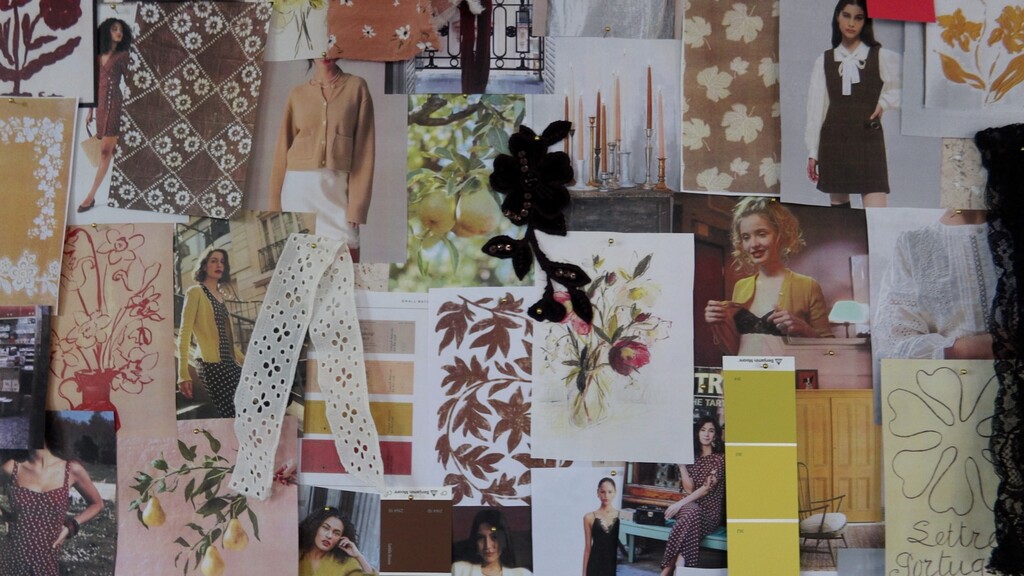
Habit 1: Planning My Projects Before Shopping
For years, I'd walk into the fabric store with vague ideas and come home with beautiful fabric but no clear vision. Sound familiar? I'd end up staring at my stash, paralyzed by all the possibilities, and half my projects would sit unfinished because I'd lose steam halfway through.
Everything changed when I started planning projects before heading to the fabric store. Now I begin by creating inspiration mood boards—gathering images that capture the feeling I want, whether it's photos from Pinterest, magazine clippings, or screenshots from movies. Then I step back and get specific about details like silhouette, color palette, and styling.
Here's what this looks like in practice: instead of buying a gorgeous floral print and hoping I'll figure out what to do with it later, I start with inspiration. Maybe I've collected images that all have that effortless, classic French vibe. I'll look them over, add more images, and start to notice the patterns—like how they all feature relaxed button-ups in soft colors. I realize that would work really well for my style, my wardrobe, and my day-to-day life. Now I have direction.
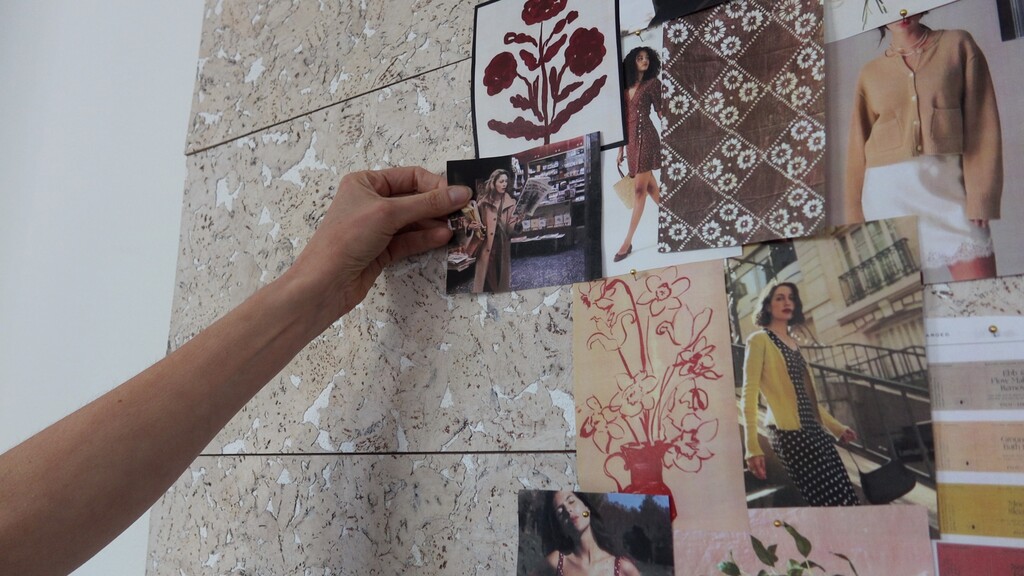
This habit makes me feel more creative and confident in my decisions. I'm more invested in what I'm making because it connects to a vision, not just a random piece of fabric that caught my eye. The key is starting with inspiration images, then narrowing down to specific details before you even think about shopping.
If this kind of systematic planning appeals to you but you want more structure, you can download our free wardrobe planner. This is the same set of planning sheets we use in the Design Your Wardrobe program at Seamwork, and it will help you map out a cohesive wardrobe plan each season.
Habit 2: Only Buying Fabric for Specific Projects
This one's going to hurt a little, but it's so worth it. I used to be a fabric hoarder—sales, clearance sections, "just in case" purchases. My stash was overflowing with gorgeous fabrics I had no plan for. The problem was that all that fabric became overwhelming instead of inspiring.
Now I have a simple rule: if I don't have a specific project in mind for it, I don't spend the money. Before buying any fabric, I ask myself: "What exact pattern will I use this for, and when am I realistically going to make it?"

This prevents that tendency to collect fabric like it's going out of style. It reduces decision paralysis because every fabric in my stash has a purpose. And honestly? It saves a ton of money. When you're only buying what you'll actually use, you can invest in better quality fabrics for the projects that matter.
For example, I had my eye on this cherry red Liberty Tana Lawn forever, but it was expensive and I didn't know what I'd realistically do with it. So instead of spending the money, I saved a picture on Pinterest and trusted it would be there if the right project came along. Then, when I planned out my summer sewing projects, I realized that the Fern blouse would be perfect. That's when I made the investment, feeling confident that I'd actually use it and buying exactly the amount I needed.
I know, I know—but what about those amazing sales? Sometimes you do run across something that's too good to pass up, and that's totally fine. But remember that a bargain you never use isn't really a bargain at all.
Habit 3: Setting Realistic Time Expectations
This one took me years to learn. I used to think hemming a dress would take 20 minutes. Spoiler alert: it never did. When we underestimate how long projects will take, we end up rushing through techniques, skipping steps, or feeling frustrated when life gets in the way.
Now I factor in learning curves, inevitable mistakes, and life interruptions. If I think something will take two hours, I plan for four. This isn't pessimistic—it's realistic. In fact, it's a good rule of thumb for planning most things in life. Everything always takes way longer than you imagine.
Here's what this prevents: that sinking feeling when you realize you can't finish your dress before the event you planned to wear it to. The temptation to skip staystitching because you're running out of time. The frustration of rushing through a technique you wanted to savor.
When you give yourself realistic timeframes, you can actually enjoy the process. You have time to fix mistakes without stress. Double your initial time estimate, especially if you're trying new techniques. Your future self will thank you.
Habit 4: Sewing Big Projects in Small Chunks
This habit changed everything about how I approach complex projects. I used to think I needed entire weekend days to make meaningful progress on sewing. The result? I'd only sew when I had huge blocks of time available, which wasn't often, and when I did have those marathon sessions, I'd burn out or make careless mistakes.
Now I break every project into small, accomplishable tasks. Instead of "sew a dress," I think "attach the facing" or "hem the sleeves." These 30-minute chunks feel totally doable, even on busy weekdays.

The magic is that consistent small progress adds up faster than sporadic marathon sessions. Plus, it's more fun this way. You're not dragging yourself through hours of sewing when you'd rather be doing something else. Each small session feels satisfying because you complete something specific.
Here's how to implement this: when you start a project, write out every major step—cutting, interfacing, constructing the bodice, setting sleeves, hemming. If your pattern instructions have a table of contents like ours do, you can print that out. Now you have a list of bite-sized tasks you can tackle whenever you have a spare moment.
Habit 5: Alternating Easy and Hard Projects
I learned this one the hard way. I remember once sewing a pair of jeans right after finishing a tailored coat that I'd worked on for a month. I had the jeans all planned out and all the supplies, so I felt like I had to work on them next. But tackling too many challenging projects back-to-back led to major sewing fatigue.
Now I deliberately alternate complex projects with simple, satisfying makes. After I finish something that pushed my skills, I'll make a basic tee or try a pattern I've sewn before in a new fabric. Think of it as a palette cleanser for your sewing brain.
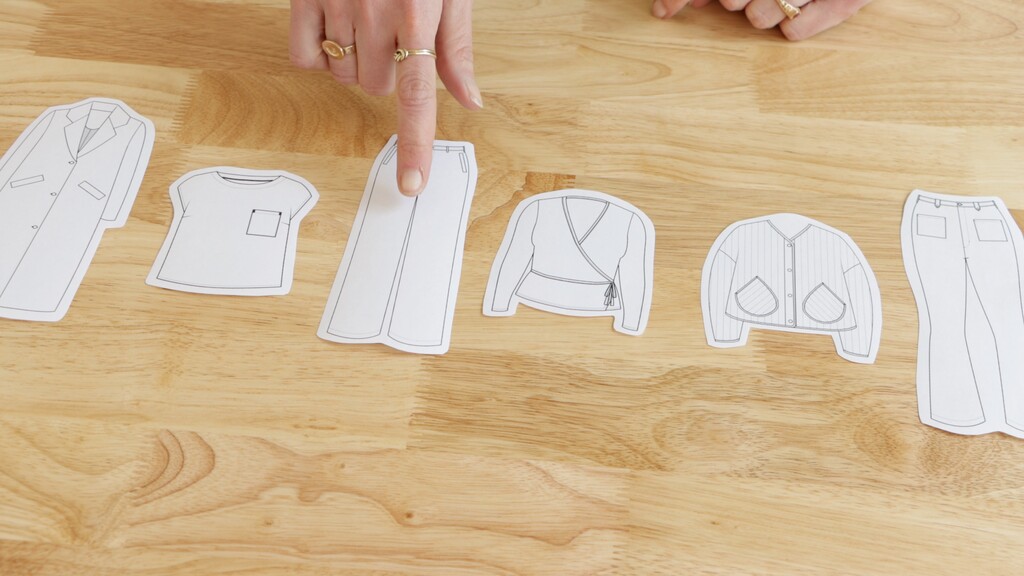
My go-to palette cleansers are the Joss pants and the Alice tee—two easy patterns that I wear all the time. At this point, I can practically sew them on autopilot. These are the patterns I reach for when I want the satisfaction of completion without the mental energy of learning something new.
Your "easy" projects might be hemming pants, making tote bags, or sewing that one dress pattern you know by heart. The key is choosing something that feels relaxing and restorative rather than challenging.
Habit 6: Cutting and Sewing on Different Days
This one sounds simple, but it was a game-changer for my sewing efficiency. I used to cut out one project, sew it completely, then cut out the next one. Seems logical, right? But here's what I realized: I was wasting momentum.
Setting up a cutting station takes time—getting out all the tools, clearing the space, laying out fabric. It's a whole production. So now I designate specific cutting days where I cut out multiple projects at once. Then my sewing sessions can focus entirely on construction.

For my recent fall sewing, I cut out all six projects before sewing a stitch. It definitely saved me time and kept me organized.
This approach is so much more efficient. You're in cutting mode, so you tackle all your cutting tasks at once. Then when you sit down to sew, you can dive straight into the fun part without having to stop and set up for cutting.
Here's how to implement this: when you're ready to cut out a project, ask yourself what else you could cut at the same time. Set up your cutting station once and knock out 2-3 projects. Store cut pieces in labeled bags or clear containers so they stay organized and you can grab whichever project matches your mood when you're ready to sew.
Habit 7: Using a Press Cloth Every Time
This tiny habit upgrade makes an immediate difference in how polished your finished garments look. Iron shine marks can completely ruin the appearance of a beautifully sewn piece, especially on synthetic fabrics or anything with texture.
I keep press cloths right at my ironing station. Silk organza is my go-to because it's strong, protective, and you can see right through it, so it's easy to press seams accurately. But pieces of cotton or muslin work fine too.
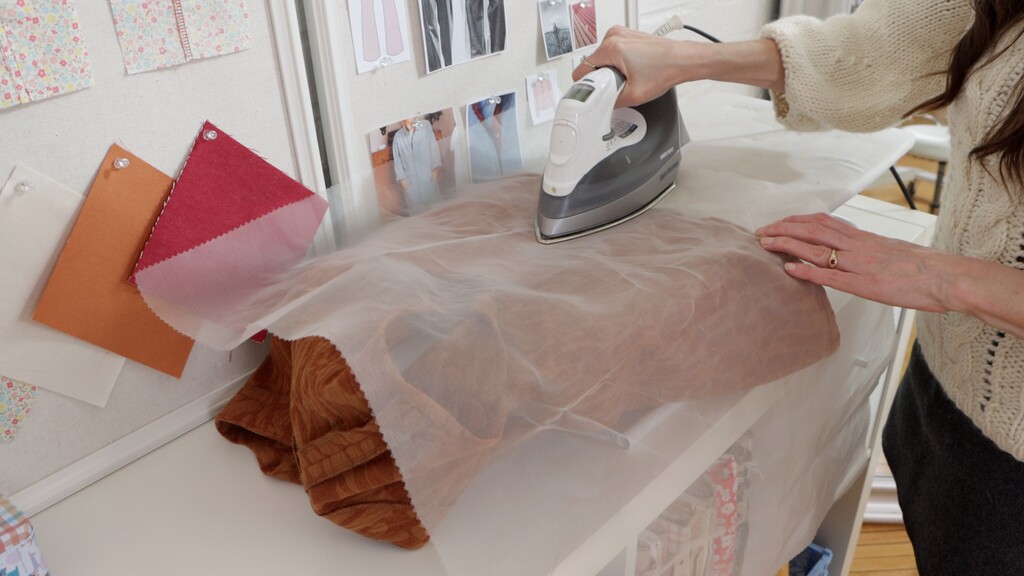
Having them easily accessible is key—if you have to hunt for one every time, you'll be tempted to skip it. Now nearly every time I press, the press cloth goes between my iron and the fabric.
This protects the fabric surface and allows me to press confidently without worrying about damage. It's one of those simple tools that gives you instantly more refined results. You can even use it on all your clothing, handmade or not.
Habit 8: Taking Photos of Successful Machine Settings
This is such a modern solution to an age-old sewing problem. How many times have you spent ages getting your serger tension just right, only to forget exactly what settings you used by the next project? Or finally nailed the perfect buttonhole settings but didn't write them down?
Now I document everything with photos—serger tensions, successful zigzag settings, buttonhole configurations. Anything that took trial and error to get right gets photographed.
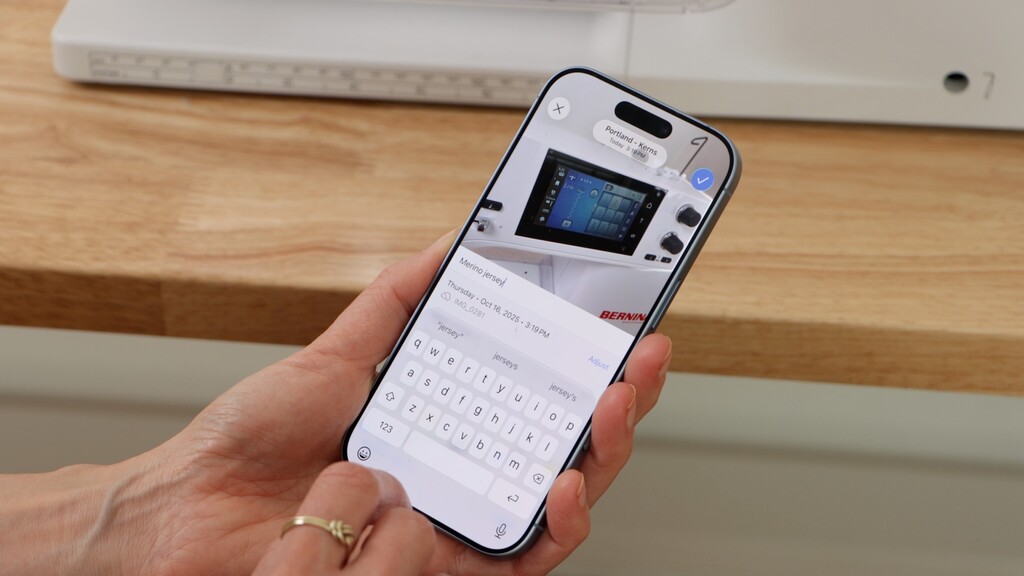
In the photo notes, I include what fabric type I was using and what project it was for. This saves so much time and frustration because I never have to re-test settings I've already figured out.
This also works for noting which needle worked best with which thread, or documenting the exact seam finishing technique that worked perfectly on a particular fabric weight. Your phone becomes your personal sewing reference library.
Habit 9: Always Testing New Techniques on Scraps
Even after all these years of sewing, I still test every new technique on scraps before using it on my actual project. Every single time. This habit has saved me from countless costly mistakes and built my confidence immeasurably.
When you try techniques directly on your project fabric, you're setting yourself up for heartbreak. But when you test first, you're creating a learning mindset rather than a perfectionist one. The pressure is off because it's just a scrap.
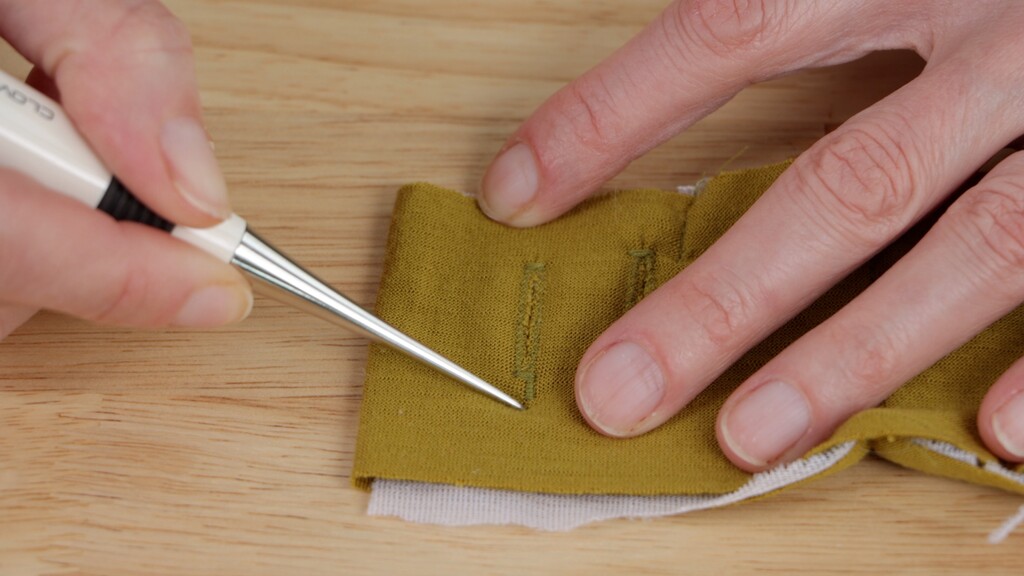
Testing isn't extra work—it's actually part of the process. Think of it like warming up before exercise. You wouldn't skip warming up and risk injury, so don't skip testing and risk ruining your project.
I recently bought a new sewing machine and needed to use it to sew buttonholes in a knit cardigan. It had a completely different process than my old machine, so I made sure to test on interfaced scraps instead of diving in. Thank goodness I did, because the first ones I sewed were way too narrow to open and had one side way longer than the other. After a few practice runs, I knew what I was doing and made much better buttonholes on the actual cardigan.
Habit 10: Treating Mistakes as Learning Opportunities
Here's the thing about mistakes in sewing: they're going to happen no matter how much you plan and test. Even the most experienced sewists mess up regularly. The difference is how we respond to those mistakes.
I used to let mistakes derail my entire mood and make me want to quit projects. Now when something goes wrong, instead of asking "How did I mess up?" I ask "What can this teach me?" This simple reframe changes everything.
For example, I once accidentally hemmed a vintage dress way too short. I ended up salvaging it with a ruffle, but I learned a valuable lesson: get help when you're measuring a hemline, and cut it a little longer than you think you need so you can double-check. You can bet I won't make that mistake next time.
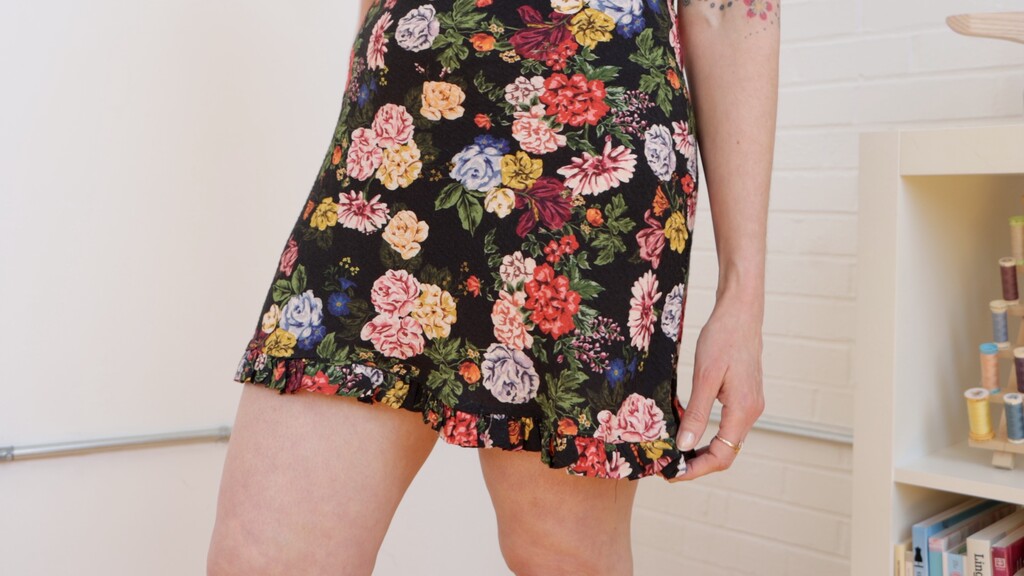
Every mistake contains valuable information like this. This mindset reduces sewing anxiety because you're not afraid of making mistakes anymore. It builds resilience because you know you can handle whatever comes up.
When you embrace mistakes as part of learning, sewing becomes so much more enjoyable. You stop walking on eggshells and start taking the creative risks that lead to real growth.
The Big Picture: Small Changes, Big Results
These ten habits might seem small individually, but together they create a completely different sewing experience. Instead of feeling overwhelmed and frustrated, I approach each project with confidence and excitement.
Pick one or two of these habits to start with rather than trying to change everything at once. Small, consistent changes create lasting transformation. The goal isn't perfection—it's creating a sewing practice that brings you joy and satisfaction.
Remember, sewing should feel like self-care, not another item on your to-do list. These habits help you get back to the heart of why you started sewing in the first place: the joy of creating something beautiful with your own hands.
